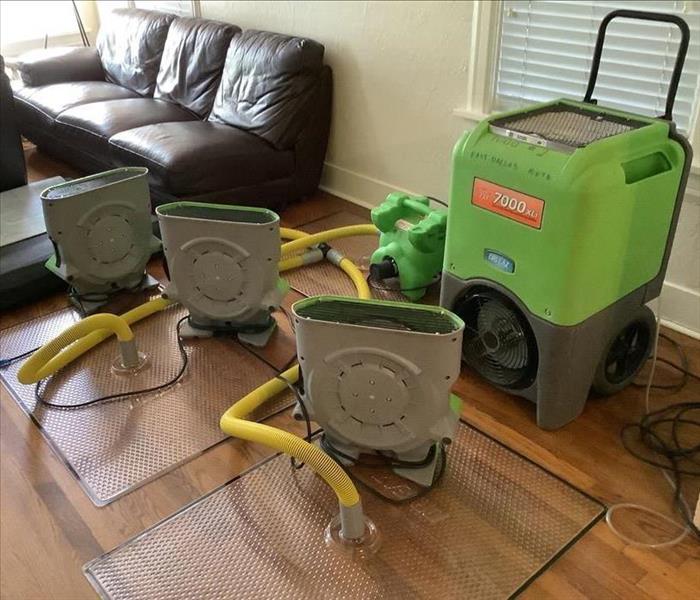Restoring Hardwood Floors After Water Damage: A Comprehensive Guide
5/14/2024 (Permalink)
Hardwood floors add an unparalleled elegance and warmth to any home. However, when faced with water damage, their beauty can quickly turn into a homeowner's nightmare. Whether caused by a burst pipe, flooding, or an unexpected spill, water can cause significant harm to hardwood flooring. Understanding the steps to mitigate and repair this damage is crucial to preserving both the aesthetics and the integrity of your floors. Here, we delve into the process of addressing water damage on hardwood floors.
Understanding the Impact of Water on Hardwood
Water is hardwood’s nemesis. When wood absorbs water, it expands. As it dries, it contracts. This constant movement can lead to warping, cupping, buckling, and even cracking. Prolonged exposure can also foster mold growth, which poses additional health risks and complicates the restoration process.
Immediate Steps to Take After Water Exposure
- Act Quickly: The faster you respond, the better your chances of minimizing damage. Remove any standing water immediately using mops, towels, or a wet vacuum.
- Clear the Area: Move furniture, rugs, and other items away from the affected area to prevent further water absorption and to allow for better air circulation.
- Dry the Floor: Use fans, dehumidifiers, and open windows to enhance air flow and speed up the drying process. In some cases, professional drying equipment may be necessary to thoroughly remove moisture.
- Assess the Damage: Once the floor is dry, inspect for signs of warping, cupping, or buckling. It may take a few days to see the full extent of the damage as the wood stabilizes.
Professional Restoration Process
When dealing with significant water damage, it’s often best to consult professionals. Here’s what the restoration process typically involves:
- Moisture Measurement: Professionals use moisture meters to determine the extent of water saturation and to monitor the drying process.
- Controlled Drying: Specialized drying equipment, such as industrial-grade dehumidifiers and floor mats, ensures that moisture is removed efficiently without causing additional stress to the wood.
- Sanding and Refinishing: Once dry, the floors may need to be sanded to remove any cupping or warping. After sanding, refinishing restores the floor’s original appearance and provides a protective seal.
- Replacement: In cases of severe damage, some planks may need to be replaced entirely. Matching the new wood to the existing floor can be challenging but is essential for a seamless look.
Preventing Future Water Damage
- Seal Gaps: Ensure that there are no gaps between the floorboards and that the finish is intact. Regularly reseal hardwood floors to provide a barrier against moisture.
- Maintain Humidity Levels: Use a humidifier in the winter and a dehumidifier in the summer to maintain stable humidity levels in your home, preventing the wood from expanding and contracting excessively.
- Quick Response to Spills: Wipe up any spills immediately to prevent water from seeping into the wood.
- Inspect Regularly: Regularly check for signs of leaks from appliances, plumbing, or roofing that could lead to water damage.
Water damage to hardwood floors is a serious issue that requires prompt and effective action. By understanding the steps to take immediately after water exposure and the professional restoration process, you can save your floors from irreversible damage. Moreover, implementing preventative measures will help protect your hardwood floors from future water-related issues, ensuring they remain a beautiful feature in your home for years to come.
If you’re dealing with water-damaged hardwood floors, don’t hesitate to contact a professional restoration service. Their expertise and specialized equipment can make all the difference in reviving your beloved floors.






 24/7 Emergency Service
24/7 Emergency Service
